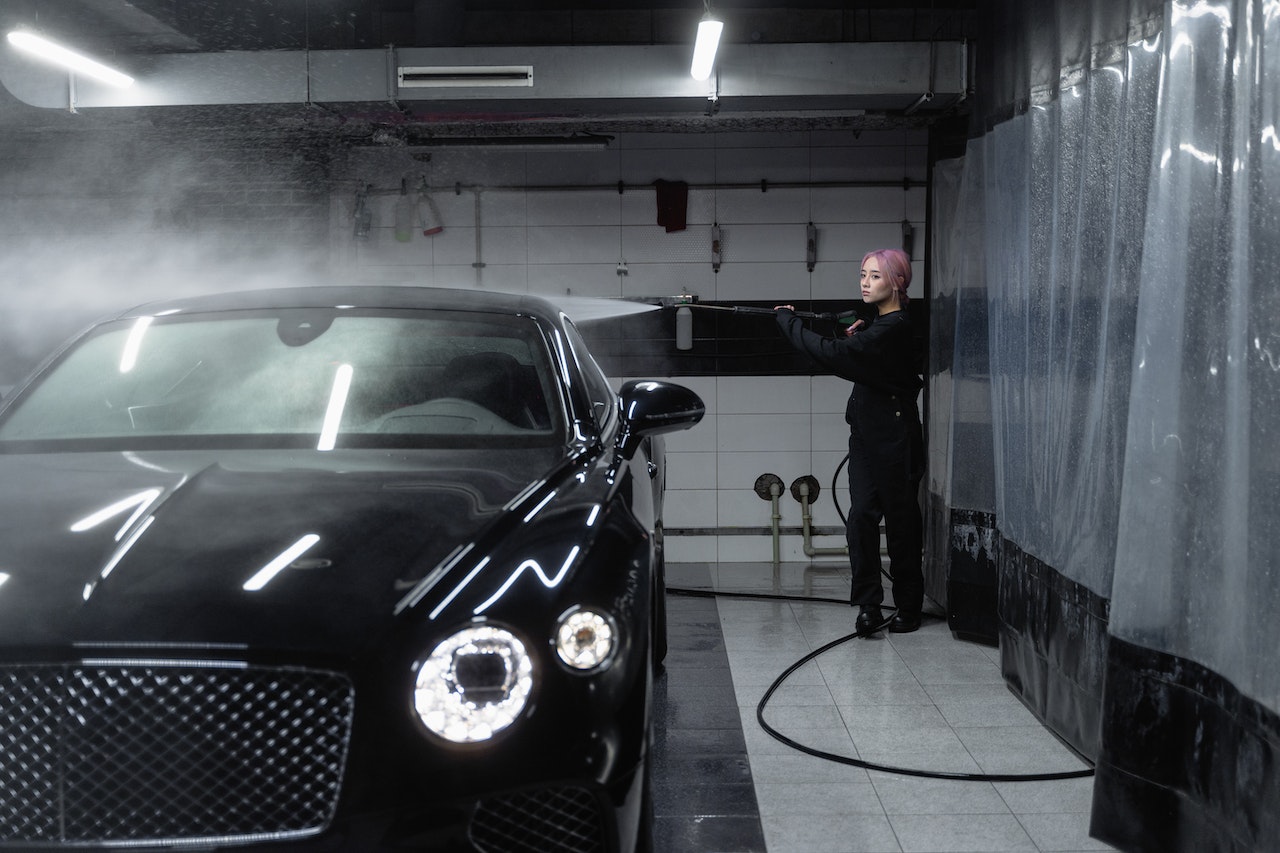
As a car owner, you want to make sure that your vehicle runs smoothly and efficiently at all times. Regular maintenance is key to achieving this, but with so many tasks to keep track of, it can be overwhelming to know where to start. That’s why we’ve created the ultimate guide to keeping your car in tip-top shape. From oil changes to tire rotations, we’ll cover everything you need to know to maintain your vehicle’s performance and longevity. With our expert tips and advice, you’ll be able to take care of your car like a pro and avoid costly repairs down the road. So buckle up and get ready to learn how to keep your car running like a dream!
Why Car Maintenance Is Important
Car maintenance is essential to keep your vehicle running smoothly and efficiently. Regular maintenance can help to prevent breakdowns, extend the life of your car, and improve fuel efficiency. It can also save you money in the long run by helping you avoid costly repairs. Neglecting maintenance can lead to bigger problems down the road, resulting in more expensive repairs and a shorter lifespan for your car.
Regular maintenance can also help you identify potential problems before they become larger issues. For example, a routine oil change can help you catch a leaky gasket or a worn-out belt before it causes serious damage to your engine. Regular maintenance can also help you keep your car safe by ensuring that your brakes, tires, and other important components are in good working order.
In short, regular car maintenance is an investment in the longevity and reliability of your vehicle. By keeping up with routine maintenance tasks, you can enjoy a safer and more cost-effective driving experience.
Regular Car Maintenance Checklist
Now that you understand the importance of regular car maintenance, let’s take a look at the tasks you should be performing regularly to keep your car in top shape. Here’s a checklist to get you started:
- Oil changes
- Tire rotations
- Brake inspections and replacements
- Air filter replacements
- Battery maintenance
- Fluid checks and replacements
- Exterior and interior car care
We’ll cover each of these tasks in more detail below.
Oil Changes
One of the most important maintenance tasks you can perform for your car is changing the oil. Oil lubricates the engine and helps to prevent wear and tear on the moving parts. Over time, however, oil can become contaminated with dirt, debris, and other particles, reducing its effectiveness. That’s why it’s important to change your oil regularly.
Most experts recommend changing your oil every 3,000 to 5,000 miles or every three to six months, whichever comes first. However, the recommended interval can vary depending on the make and model of your car, as well as your driving habits. Check your owner’s manual for specific recommendations.
To change your oil, you’ll need to drain the old oil and replace it with new oil. You’ll also need to replace the oil filter, which helps to remove contaminants from the oil. If you’re comfortable working on your car, you can perform this task yourself. Otherwise, you can take your car to a mechanic or oil change shop to have it done.
Tire Rotations
Tire rotations are another important maintenance task that can help to extend the life of your tires and improve handling and fuel efficiency. What’s inside a tire wears unevenly depending on its position in the car, with the front tires typically wearing more on the outside edges and the rear tires wearing more on the inside edges. By rotating your tires regularly, you can help to even out the wear and tear and extend the life of your tires.
Most experts recommend rotating your tires every 5,000 to 7,500 miles, or every six months to a year, depending on your driving habits. Again, check your owner’s manual for specific recommendations.
To rotate your tires, you’ll need to remove each tire and move it to a different position on the car. For example, you might move the front tires to the back and the back tires to the front, or you might move the left tires to the right and the right tires to the left. If you’re not comfortable doing this yourself, you can take your car to a mechanic or tire shop to have it done.
Brake Inspections and Replacements
Your brakes are one of the most important safety features on your car, so it’s important to keep them in good working order. Most experts recommend having your brakes inspected every 12,000 miles or once a year, whichever comes first. You should also have your brakes replaced as needed. Signs that your brakes may need to be replaced include squeaking or grinding noises, a spongy or soft brake pedal, or a pulsating brake pedal.
To inspect your brakes, a mechanic will check the brake pads and rotors for wear and tear. If the pads are worn down or the rotors are damaged, they’ll need to be replaced. It’s important to have your brakes inspected and replaced by a qualified mechanic, as this is a critical safety feature of your car.
Air Filter Replacements
Your car’s air filter helps to prevent dust, dirt, and other particles from entering the engine. Over time, however, the filter can become clogged, reducing its effectiveness. That’s why it’s important to replace your air filter regularly.
Most experts recommend replacing your air filter every 12,000 to 15,000 miles or once a year, whichever comes first. However, if you drive in dusty or dirty conditions, you may need to replace your air filter more often. Check your owner’s manual for specific recommendations.
Replacing your air filter is a simple task that you can do yourself. Simply locate the air filter housing, remove the old filter, and replace it with a new one. If you’re not comfortable doing this yourself, you can take your car to a mechanic to have it done.
Battery Maintenance
Your car’s battery is essential to starting the engine and powering the electrical components. Over time, however, the battery can become corroded or drained, reducing its effectiveness. That’s why it’s important to maintain your battery regularly.
Most experts recommend checking your battery every three to six months for signs of corrosion or damage. You should also have your battery tested every year to ensure that it’s holding a charge. If your battery is more than three years old, you may want to consider replacing it.
To check your battery, you’ll need to locate it under the hood and check for signs of corrosion or damage. If you notice any issues, you can clean the battery terminals with a wire brush and a mixture of baking soda and water. If your battery is not holding a charge, you’ll need to replace it.
Fluid Checks and Replacements
Your car relies on a variety of fluids to keep it running smoothly, including coolant, transmission fluid, brake fluid, and power steering fluid. Over time, these fluids can become contaminated or low, reducing their effectiveness. That’s why it’s important to check and replace your car’s fluids regularly.
Most experts recommend checking your car’s fluids every month or so. You should also have your fluids replaced as needed. Signs that your fluids may need to be replaced include a burning smell, a low fluid level, or difficulty shifting gears.
To check your car’s fluids, simply locate the appropriate dipstick or reservoir under the hood and check the fluid level and condition. If the fluid is low or contaminated, you’ll need to replace it. You can do this yourself or take your car to a mechanic to have it done.
Exterior and Interior Car Care
In addition to the mechanical tasks we’ve discussed, it’s also important to take care of your car’s exterior and interior. Regular washing and waxing can help to protect your car’s paint and prevent rust and corrosion. Vacuuming and cleaning the interior can help to keep it looking and smelling fresh.
Most experts recommend washing your car every two weeks and waxing it every three months. You should also vacuum and clean the interior every month or so. If you’re not comfortable doing this yourself, you can take your car to a car wash or detailer to have it done.
DIY Car Maintenance
While some maintenance tasks require a qualified mechanic, there are many things you can do yourself to keep your car in top shape. For example, you can check your tire pressure regularly, replace your windshield wipers, and check your headlights and taillights for burned-out bulbs. Doing these simple tasks yourself can save you money and help you stay on top of your car’s maintenance needs.
Choosing the Right Mechanic
When it comes to more complex maintenance tasks, it’s important to choose the right mechanic. Look for a mechanic who is certified and experienced, and who comes recommended by trusted sources. You should also ask for a written estimate before any work is done, and make sure to get a warranty on the parts and labor.
Conclusion
Regular car maintenance is essential to keep your vehicle running smoothly and efficiently. By following our checklist and performing routine maintenance tasks, you can extend the life of your car, improve fuel efficiency, and avoid costly repairs down the road. Remember to choose the right mechanic for more complex tasks, and take care of your car’s exterior and interior to keep it looking and smelling great. With our expert tips and advice, you’ll be able to take care of your car like a pro and enjoy a safer, more cost-effective driving experience.


